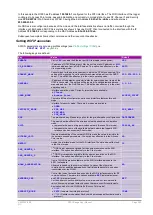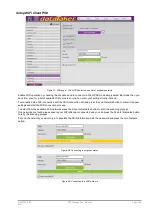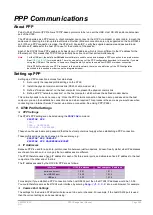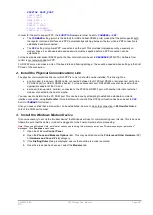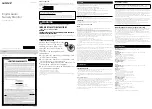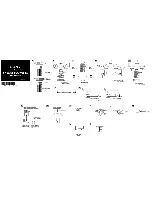
UM-0085-B09
DT80 Range User Manual
Page 255
RG
Figure 107: Example software connection for a DT80 on an Ethernet network (
DeTransfer
software shown)
Note:
When creating a new connection the current version of
DeTransfer
defaults to Port 8. It must therefore be explicitly set to Port
7700.
If you now press Connect, you should be able to send commands to the
DT80
and receive data, just as you would using
USB or RS232.
Multiple Connections
Up to three client computers (or three
DeTransfer
sessions on the one computer) can simultaneously connect to the
DT80
command interface using the TCP/IP network. This is in addition to a possible USB and/or RS232 connection.
At any one time, only one of these interfaces/sessions can be the
active
interface. The active interface is the one on
which the most recent
DT80
command was sent.
Whenever the
DT80
transmits something over the command interface (e.g. returned/unloaded data, prompt strings,
messages, etc.), it is send to the current active interface, plus all connected TCP/IP sessions. This provides a way to
"broadcast" data to a number of different computers, each of which operates as a passive listener.
Disconnecting
It is important to note that all Ethernet sessions will be disconnected if the
DT80
:
•
undergoes a hard reset (
HRESET
, manual reset or power failure)
•
enters low power sleep mode
For this reason, the
DT80
normally disables sleep mode while an Ethernet cable is connected (although this can be
overridden by setting P15 to 3 or 4.
If an Ethernet session is disconnected in this way, you may need to manually disconnect then reconnect in
DeTransfer
.
Using the DT80 FTP Server
The
DT80
can also function as an FTP (File Transfer Protocol) server. You can use this mechanism to transfer data and
program files to and from the
DT80
. This is done by running an
FTP client
application on the host computer and using it
to connect to the
DT80
's
FTP server
(by specifying the
DT80
's IP address).


